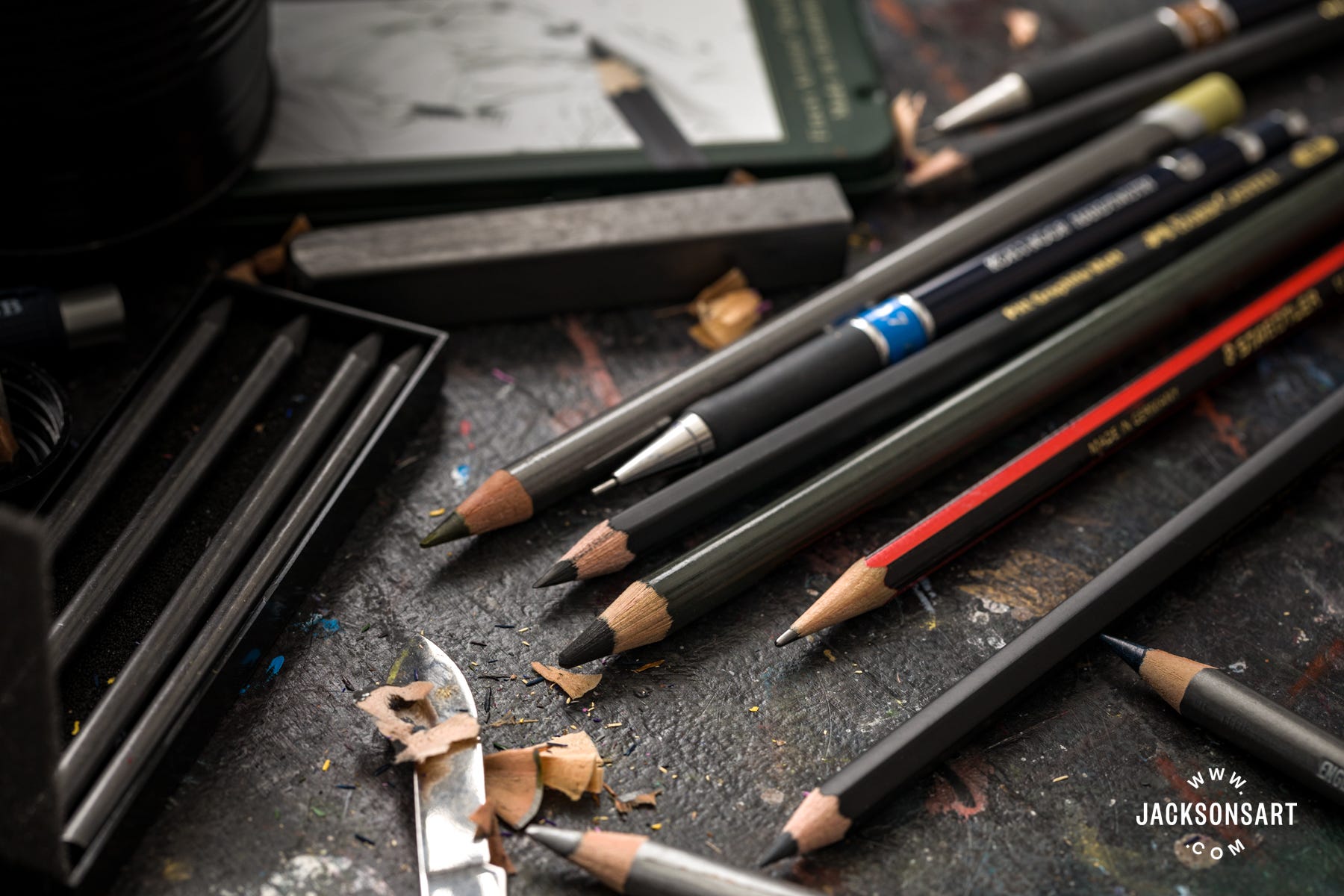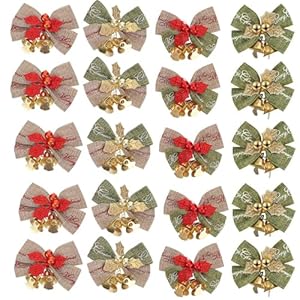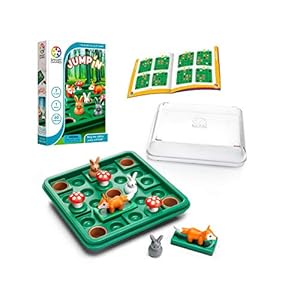
Graphite pencils are an essential part of an artist’s kit. They are a simple tool, but the history of the pencil is full of twists, turns, intrigue, and brilliant innovation. This article traces the invention and development of the artist pencil, from the 16th century to the present day.
The Dark History of the Pencil
What is Graphite?
Graphite is a soft, crystalline form of carbon found in the earth’s crust. It is thought to be one of the oldest minerals on earth, and pottery decorated with graphite dates back to the Neolithic age. Later examples by Mayan craftsmen have been discovered in Southern Mexico. It was also used as a black pigment by the Aztecs.
Using rocks, metals, or carbon-containing materials as drawing tools is an ancient practice. As long as a material is soft enough, it can leave a mark when it is dragged across a surface. Charcoal and chalk are some of the earliest examples of drawing materials. Certain metals, like silver, tin, and lead, are soft enough to draw with on an abrasive surface. This technique, known as metalpoint, was popular during the Renaissance period.
The Birth of the Pencil
The history of the pencil began in Cumbria in the north of England. In the first half of the 16th century, large veins of graphite were discovered there. Graphite is usually found as a flaky deposit, but the Cumbrian deposit was solid which meant it could be cut up into sticks. Locals used it for marking sheep. Within 200 years a cottage industry had emerged that produced drawing and writing tools made of pure graphite wrapped in twine or sheepskin. These were used by artists across central Europe, and 16th and 17th-century graphite works were known as ‘plumbago drawings’.

The Rev. William Atkinson, wearing a broad-brimmed hat, ca. 1760
George Romney
Graphite, 15.2 x 18.4 cm | 6 x 7.25 in
Metropolitan Museum of Art
It is likely that many of these early pencils were made with stolen graphite. The material was extremely valuable, not only for making pencils but for lining moulds for casting cannon and musket balls. With the price soaring, graphite smuggling became a big problem. Mines were manned by armed guards and were even purposefully flooded to prevent theft. One theory holds that this is where the term ‘Black Market’ comes from, referring to how graphite would turn smugglers’ hands black.
In the 1560s, Italian couple Simonio and Lyndiana Bernacotti invented the wooden pencil-casing by hollowing out a flat rod of juniper wood and fitting the lead inside. This innovation wouldn’t be mass-produced until the 17th century, when merchants in Nuremberg saw an opportunity in pencil production. They were unable to source solid lumps of graphite from Bavarian mines, but they could extract crushed graphite. It was then powdered and combined with wax, sulphur, and antimony and encased in a wooden holder. By 1662, pencils were being produced in Nuremberg, notably by Friedrich Staedtler who would later give his name to the Staedtler company. However, pencils made from solid English graphite were still considered to be superior for another century.

Landscape with cattle and figures; sketch for the Rustic Courtship, 1755-97
Thomas Gainsborough
Graphite, 28 x 19.9 cm | 11 x 7 in
Metropolitan Museum of Art
The word ‘pencil’ was first written down in the 14th century, so it predates the development of the graphite tool. It comes from the Latin penicillus meaning ‘little tail’, and was once used to describe artist brushes.
Have Pencils Ever Contained Lead?
One misleading aspect of the history of the pencil is that we refer to the core of a pencil as a ‘lead’. Elemental lead has never been used in the production of graphite pencils. The confusion arises from the fact that, when graphite was first identified in Europe, it was thought to be a variety of lead. It wasn’t until the 18th century that chemist Carl Wilhelm Scheele discovered that they were two different materials. In 1789 Abraham Gottlob Werner coined the word ‘graphite’, meaning ‘writing stone’.
The Invention of the Modern Pencil
The invention of the modern pencil arose from the French Revolutionary Wars of the late 18th century. Britain imposed a naval blockade on France, cutting off their supply of high quality English graphite. French economic policy-makers were keen to champion homegrown innovation in response to the growing dominance of British-made products. Nicholas-Jacques Conté was tasked with reinventing the pencil, and in 1795 he combined powdered graphite with clay to create a lead, which was then fired and encased with wood. This was the creation of the pencil as we know it today.
Conté patented his invention and founded Conté à Paris, which is still a leading maker of drawing materials. In 1802 a similar method was patented by Austrian inventor Joseph Hardtmuth. His company, Koh-I-Noor Hardtmuth, still make artist pencils today. These innovations ended Britain’s monopoly because solid graphite was no longer required to make high quality pencils. In 1891 the last mine was closed. However, the tradition of Cumbrian pencil-making is continued by Derwent, who have been producing artist drawing materials in Keswick for almost 200 years. It is fascinating to note how old many pencil-making companies are, and how many of them were involved in significant pencil innovation. Staedtler (est. 17th century), Faber Castell (est. 1761), Koh-i-Noor (est. 1790), Conté à Paris (est. 1795), and Derwent (est. 1832) are all still major players in the industry.
Different Grades of Graphite Pencil
Conté’s method of pencil lead manufacture meant that different quantities of clay could be added to the powdered graphite to change the depth of the mark. The higher the proportion of graphite, the softer the lead and the deeper and blacker the mark. The more clay is added, the harder and finer it becomes. These variations have been harnessed by artists to make drawings with incredible tonal range.

A Woman Fishing, 1884
Georges Seurat
Conté crayon, 30.8 x 23.8 cm | 12 1/8 x 9 3/8 in
Metropolitan Museum of Art
Today, graphite pencils are graded on a scale between 10H (high clay content) and 10B (high graphite content), with HB being the medium grade. There is some confusion over what the letters stand for. Some sources say that they stand for ‘hardness’ and ‘blackness’, but Koh-i-Noor say that the system originated with them and that they stand for ‘Hardtmuth’, after their founder Joseph Hardtmuth, and ‘Budejovic’, the location of their factory.
Recent Innovations in the History of the Pencil
The essential design of artist pencils has not changed much in the last 200 years, but various innovations have made them even easier to use. Rubber erasers were developed in the 1770s. And in 1858, American inventor Hymen Lipman tried to patent his design of a pencil with an eraser attached to the end. Lipman’s patent was denied, but it seems that from this time the eraser-capped pencil became commonplace.
Mechanical pencils are another way of using graphite. Their advantage is that they hold a point without being sharpened, making them useful for technical drawing and fine line work. The history of the mechanical pencil is much longer than we might think. The first description of a graphite lead inserted into a holder dates from 1565, and the earliest surviving example of a refillable pencil was found in a shipwreck dating to 1791. The first holder with a lead-propelling mechanism was patented in 1822, and the spring-loaded design we use today dates from 1877.
The beauty of pencils is their simplicity and immediacy. They are extremely portable, easily erasable, and can be sharpened to a fine point for detailed work (or used blunt for softer shading). Pencils are great for working quickly, like making a rapid drawing in a sketchbook, as well as for complex technical drawing. We use pencils so frequently, in everyday life as well as in the studio, that it’s easy to overlook their usefulness. The history of the pencil, and the innovations that brought us the tools we use today, is a reminder of how brilliant they are.
Further Reading
Choosing a Rubber: Comparing Erasers
Inside the Sketchbook of Bridget Meyne
Green Earth: The Subtle but Powerful Colour of Early Italian Painting
Artist Review: Faber-Castell Polychromos Warm Grey Pencils
Shop Pencils on jacksonsart.com
Trending Products

















